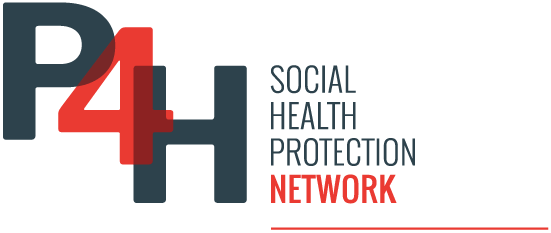India is experiencing a demographic shift, with a large youthful workforce and a rapidly growing elderly population projected to reach 193 million by 2030, highlighting the urgent need for a robust and equitable health system. Universal Health Coverage is essential to...
Lived experience of out-of-pocket costs of health care and medicines by people with chronic conditions and their families in Australia: a systematic review of the qualitative literature
Despite Australia’s Medicare, out-of-pocket costs (OOPC) still make up 14% of total health expenditure. This systematic review examined the experiences of Australians with chronic conditions facing OOPC for out-of-hospital care, revealing income loss due to ill...
The health system in Syria (2000–2024): assembling the pieces of a fragmented system—A scoping review
A recent scoping review synthesizing literature and data from 2000 to 2024 provides a comprehensive overview of Syria’s health system, aiming to guide post-conflict recovery efforts. The study highlights persistent challenges such as politicization of healthcare,...
Automatic Health Insurance Enrollment for Vulnerable Individuals: Opportunities for Egypt’s Universal Health Insurance System
This note offers insights on how Egypt can move forward to achieve automatic UHIS coverage for vulnerable groups. Automatic enrollment would help eliminate barriers to UHIS coverage, get rid of long queues for applicants, decrease the administrative burden on...
Social health insurance, health services utilization and procurement of private health insurance in Thailand’s multi-payer universal health system
Thailand’s entire population is insured under one of the three main public health insurance schemes: the Universal Coverage Scheme (UCS), the Social Security Scheme (SSS), and the Civil Servant Medical Benefit Scheme (CSMBS). This study investigated differences in...
Long-term financial sustainability of Rwanda’s universal health coverage model: Challenges and solutions (2011 – 2021) and Vision 2050
Since 2000, Rwanda has made remarkable progress toward universal health coverage (UHC) through a Community-Based Health Insurance (CBHI) system, but now faces chronic financial sustainability challenges as it aims for higher health-care standards under Vision 2050. A...
Private equity investment in long-term care: The case of Ireland
Private equity (PE) firms play a significant role in the financialisation of healthcare systems, yet research has largely overlooked their direct involvement, especially outside the U.S. This study investigates the drivers behind PE investments in Ireland’s long-term...
Reconfiguring health purchasing for universal health coverage: insights from Nepal with relevance to low- and middle-income countries
Nepal's shift to federalism and the National Health Insurance Program (NHIP) aimed for universal health coverage, but persistent structural flaws undermine strategic purchasing and system efficiency. The Ministry of Health and Population’s conflicting roles as...
Challenging inadequate and fragmented primary health care financing: findings from Bangladesh, Indonesia, Maldives, and Nepal
Strengthening primary health care (PHC) is central to achieving universal health coverage in the WHO South-East Asia Region. This study, published in The Lancet Regional Health – Southeast Asia and Health Policy, analyses PHC financing arrangements in Bangladesh,...
The ethics of behaviour-based insurance models: Solidarity-based concerns in Germany’s statutory health insurance
Sickness funds are starting to use digital behavioral data to encourage physical activity among their members, but the ethical and societal implications, especially in solidarity-based insurance systems, are not well understood. While these programs may foster new...
Effect of community-based health insurance on the use of health service and perceived quality of care in Bacho Woreda, central Ethiopia: A mixed method study
Ethiopia's Community Based Health Insurance (CBHI) scheme significantly enhances outpatient care utilization, as evidenced by a study in Bacho Woreda. The research found that CBHI members were more likely to seek healthcare services, with 60% expressing satisfaction...
Navigating Nepal’s health financing system: A road to universal health coverage amid epidemiological and demographic transitions
Nepal is at a critical juncture in its journey toward universal health coverage (UHC), as it confronts the dual challenges of demographic shifts and a growing burden of non-communicable diseases (NCDs). These transitions are driving up out-of-pocket (OOP) healthcare...
Health effects of the Brazilian Conditional Cash Transfer programme over 20 years and projections to 2030: a retrospective analysis and modelling study
Conditional cash transfer (CCT) programmes have emerged as powerful tools in addressing poverty and promoting health equity, particularly in low- and middle-income countries. Brazil’s Bolsa Família Program (BFP), launched in 2004, stands as one of the world’s most...
Global Health Watch 7: Mobilizing for health justice – Chapter D3, Financing Pandemic Recovery Prevention Preparedness and Response
A chapter in Global Health Watch 7, titled “Financing Pandemic Recovery, Prevention, Preparedness and Response”, critically examines current global health financing structures through the lens of pandemic cycles. Authored by the People’s Health Movement and Daraja...
Forgone Care of doctor’s visits in Germany – Results from three cross-sectional surveys
A study analyzing data from German representative surveys found that 21% of participants reported forgone care in the past year, with higher rates in women and younger adults. The main barriers to accessing care were categorized as systemic, psychological, and...
